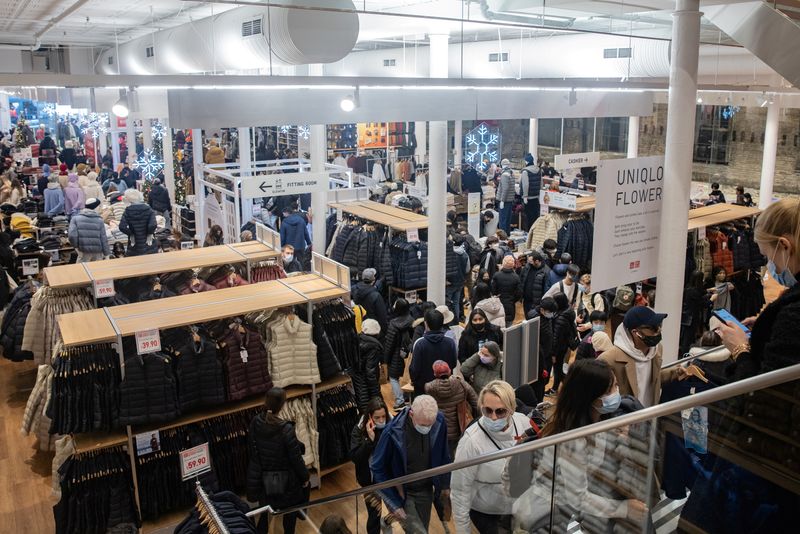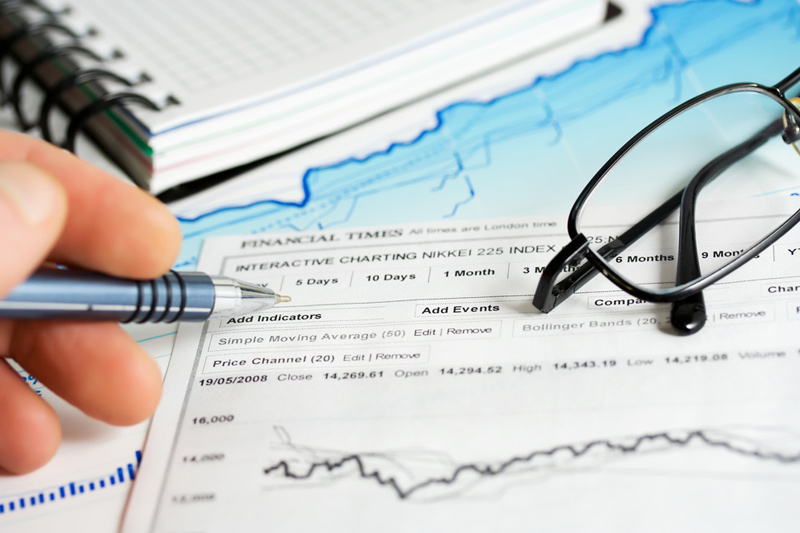By Lucia Mutikani
WASHINGTON (Reuters) -U.S. retail sales increased solidly in September likely as lower gasoline prices gave consumers more money to spend at restaurants and bars, supporting the view that the economy maintained a strong growth pace in the third quarter.
The slightly stronger-than-expected rise in sales reported by the Commerce Department on Thursday also reflected sharp increases in receipts at clothing store outlets as well as miscellaneous store retailers. Consumers boosted online purchases and spent more at health and personal care stores.
Spending and the overall economy are being underpinned by solid income growth, ample savings as well as strong household balance sheets. Though labor market momentum has slowed, layoffs remain historically low, supporting wage gains.
Signs of the economy’s resilience likely will not discourage the Federal Reserve from cutting interest rates again next month, but will cement expectations for a smaller 25-basis-point reduction in borrowing costs.
The Atlanta Fed raised its gross domestic product growth estimate for the third quarter to a 3.4% annualized rate from the previous 3.2% pace. The economy grew at a 3.0% pace in the April-June quarter.
“Strong consumer spending in September suggests economic growth in the previous quarter was solidly above trend,” said Jeffrey Roach, chief economist at LPL Financial (NASDAQ:). “Our baseline remains that the Fed will likely cut a quarter of a percent in both November and December.”
Retail sales rose 0.4% last month after an unrevised 0.1% gain in August, the Commerce Department’s Census Bureau said. Economists polled by Reuters had forecast retail sales, which are mostly goods and are not adjusted for inflation, would rise 0.3%. Estimates ranged from no change to an increase of 0.8%.
Retail sales advanced 1.7% on a year-on-year basis in September. Gasoline prices dropped by about 12 cents per gallon between August and September, data from the U.S. Energy Information Administration showed.
Receipts at food services and drinking places, the only services component in the report, jumped 1.0%. That followed a 0.5% rise in August. Economists view dining out as a key indicator of household finances.
Sales at clothing stores rebounded 1.5%, likely boosted by back-to-school purchases. Receipts at miscellaneous store retailers surged 4.0%, while online sales climbed 0.4%. Grocery store sales rose 1.0%, likely as consumers stockpiled supplies due to Hurricane Helene and a short-lived dockworkers strike.
Receipts at general merchandise stores rose 0.5%. Building material and garden equipment store sales gained 0.2%. Consumers also spent more at sporting goods, hobby, musical instrument and book stores.
Gains in these store categories more than offset a 3.3% decline in sales at electronics and appliance stores as well as a 1.4% drop in receipts at furniture outlets. Sales at auto dealerships were unchanged, while receipts at service stations dropped 1.6%, reflecting lower gasoline prices.
The strength in sales is at odds with lackluster consumer sentiment as well as commentary from a number of companies that households are showing some hesitance to spend ahead of the Nov. 5 U.S. presidential election.
Nestle’s chief financial officer on Thursday laid the blame for some of the slowdown in the packaged food producer’s U.S. sales on “concerns around the elections.” Economists, however, say consumers are trading down and seeking cheaper substitutes.
“The U.S. consumer still has formidable spending power that they continue to deploy in somewhat more targeted ways,” said Scott Anderson, chief U.S. economist at BMO Capital Markets.
Stocks on Wall Street were trading higher. The dollar advanced against a basket of currencies. U.S. Treasury yields rose.
JOBLESS CLAIMS FALL
A separate report from the Labor Department showed initial claims for state unemployment benefits dropped 19,000 to a seasonally adjusted 241,000 last week, though hurricanes and a month-long strike at Boeing (NYSE:) are making it harder to get a clear read of the labor market.
Economists had forecast 260,000 claims for the latest week.
Claims jumped to more than a one-year high in the prior week, which was attributed to Helene. The storm devastated Florida and large swathes of the U.S. Southeast in late September. The ebb in filings from Helene is likely to be offset by an anticipated deluge of claims due to Hurricane Milton, which slammed into Florida weeks after Helene.
The Boeing labor strife and hurricanes depressed industrial production last month, a separate report from the Fed showed.
The claims report covered the week during which the government surveyed employers for the nonfarm payrolls component of October’s employment report. Claims rose between the September and October survey weeks. Nonfarm payrolls increased by the most in six months in September.
Economists expect Fed policymakers will not place too much weight on the employment report when they meet in early November. The report will be released days before the U.S. election.
The U.S. central bank embarked last month on its easing cycle with an unusually large half-percentage-point cut in its policy rate, lowering it to the 4.75%-5.00% range, amid growing concerns about the labor market. The Fed hiked rates by 525 basis points in 2022 and 2023 to curb inflation.
“A November rate cut remains likely, but unless and until labor market data softens again, officials will talk less about 50-basis-point cuts and more about potentially ‘pausing’ cuts at an upcoming meeting,” said Andrew Hollenhorst, chief U.S. economist at Citigroup.
Retail sales excluding automobiles, gasoline, building materials and food services increased 0.7% last month after an unrevised 0.3% rise in August. These so-called core retail sales correspond most closely with the consumer spending component of GDP. Economists upgraded their estimates for third-quarter consumer spending to a 3.4% rate from a 3.0% pace last month.
Consumer spending grew at a 2.8% rate in the April-June quarter.

“As we have long argued, consumer spending, net hiring, and payroll income have been locked in a resilient and self-reinforcing virtuous cycle throughout this expansion, supercharged by gains in household wealth and labor supply,” said Jonathan Millar, senior U.S. economist at Barclays.
“Durable deterioration in consumer spending would require something to meaningfully undermine this cycle, such as increased precaution by consumers that lifts the saving rate or reluctance to hire by businesses, despite solid demand.”


